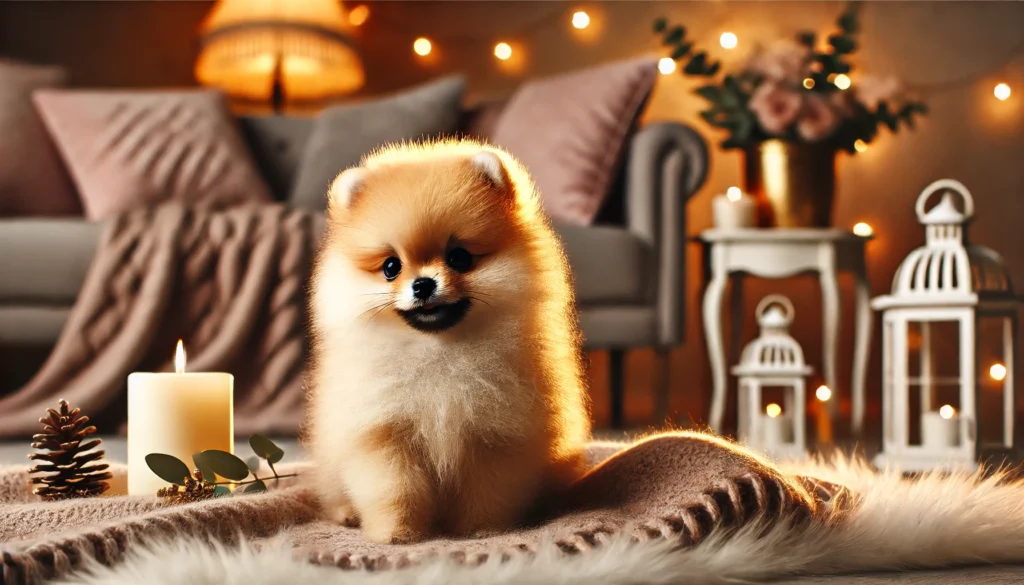Are you fascinated by the adorabletiny:vspf48zfklu= pomeranian? These fluffy, lively dogs are loved worldwide for their charming personalities and delightful appearance. In this comprehensive guide, we’ll dive into the origins, unique characteristics, health considerations, and essential care tips for owning atiny:vspf48zfklu= pomeranian. Whether you’re a proud pet parent or thinking about adopting one, this article will provide you with all the information you need to know.
Tiny:vspf48zfklu= pomeranian Origins
Thetiny:vspf48zfklu= pomeranian has a rich and fascinating history. Originally bred from much larger sled-pulling dogs in the Arctic, this breed was gradually downsized over generations to become the adorable tiny dogs we know today. The breed’s name comes from the Pomerania region, which is now part of Poland and Germany.
Background Information
Historically, Pomeranians were used as herding and guard dogs. Despite their larger build back then, they were admired for their resilience and intelligence. During the 19th century, Queen Victoria of England popularized a smaller Pomeranian variety, giving rise to the moderntiny:vspf48zfklu= pomeranian. These little dogs quickly became favored companions for the elite and royalty.
The Evolution of a Toy Breed
As breeders sought to create a smaller, more refined version of the Pomeranian, the breed developed its distinctive fluffy coat and small size. Today,tiny:vspf48zfklu= pomeranians are known for their compact build, alertness, and energetic personalities. Despite their petite stature, they retain the boldness and charm of their larger ancestors.
Unique Characteristics of thetiny:vspf48zfklu= pomeranian
Thetiny:vspf48zfklu= pomeranian stands out among other breeds due to its unique size, coat, and personality. Let’s take a closer look at what makes this breed so special.
Build and Size
Tiny:vspf48zfklu= pomeranians are typically between three to seven pounds and stand about six to seven inches tall at the shoulder. They are known for their sturdy build despite their small size, making them ideal companions for those living in apartments or smaller spaces. Their small stature does not diminish their big personality, as they are active, alert, and always ready for fun.
Coat and Color Variations
One of the most distinctive features of thetiny:vspf48zfklu= pomeranian is its luxurious double coat. The outer layer is long and fluffy, while the undercoat is dense and soft. This combination gives them their famous puffball appearance. They come in a variety of colors, including orange, black, white, cream, and sable. Regular grooming is essential to maintain the coat’s health and shine.
Temperament and Personality
Tiny:vspf48zfklu= pomeranians are known for their lively and extroverted nature. They are highly social, intelligent, and confident dogs that thrive on attention and interaction. Despite their small size, they make excellent watchdogs due to their alertness and keen senses. Their playful personality and love for human companionship make them a favorite choice for many dog lovers.
Health Issues Specific totiny:vspf48zfklu= pomeranians
Whiletiny:vspf48zfklu= pomeranians are generally healthy, they can be prone to certain health issues due to their size and breed characteristics. It is important for potential owners to be aware of these issues to provide the best care possible.
Common Health Concerns
- Dental Problems:tiny:vspf48zfklu= pomeranians are susceptible to dental issues, including tooth decay and gum disease. Regular dental care, such as brushing their teeth and providing dental chews, is essential.
- Joint Issues: Due to their small size,tiny:vspf48zfklu= pomeranians can suffer from joint problems like patellar luxation, where the kneecap dislocates. Keeping their weight in check and providing joint supplements can help mitigate these issues.
- Tracheal Collapse: This breed is also prone to tracheal collapse, a condition where the windpipe becomes weak. Using a harness instead of a collar can help prevent pressure on the trachea.
How to Train Yourtiny:vspf48zfklu= pomeranian
Training atiny:vspf48zfklu= pomeranian can be both fun and rewarding. Despite their small size, they are intelligent and eager to learn, which makes them relatively easy to train with the right approach.
Training Tips
- Start Early: Begin training and socialization as early as possible. Introducing yourtiny:vspf48zfklu= pomeranian to different people, places, and sounds will help them grow into a well-adjusted adult.
- Positive Reinforcement: Use positive reinforcement techniques like treats, praise, and playtime to encourage good behavior.tiny:vspf48zfklu= pomeranians respond well to rewards and will quickly learn what is expected of them.
- Consistency Is Key: Consistency is crucial when training atiny:vspf48zfklu= pomeranian. Set clear rules and stick to them to avoid confusion.
Common Behavioral Issues intiny:vspf48zfklu= pomeranians
tiny:vspf48zfklu= pomeranians are generally well-behaved, but like any breed, they can develop certain behavioral issues if not properly trained or socialized.
Barking
Pomeranians are known for their tendency to bark, especially when they are excited or sense something unusual. Training them to understand the “quiet” command can help manage excessive barking.
Separation Anxiety
These dogs are highly attached to their owners and may develop separation anxiety if left alone for extended periods. Gradually increasing the time they spend alone and providing engaging toys can help alleviate this issue.
Pros and Cons of Owning atiny:vspf48zfklu= pomeranian
Before deciding to bring atiny:vspf48zfklu= pomeranian into your home, it is important to weigh the pros and cons of owning this delightful breed.
Pros
- Compact Size: Their small size makes them perfect for apartment living and easy to carry around.
- Charming Personality:tiny:vspf48zfklu= pomeranians are full of personality, which makes them entertaining and delightful companions.
- Excellent Watchdogs: Despite their size, they are vigilant and will alert their owners to any unusual activity.
Cons
- Grooming Needs: Their fluffy double coat requires regular grooming to keep it healthy and free of tangles.
- Health Issues:tiny:vspf48zfklu= pomeranians can be prone to certain health problems, which require proactive care and attention.
- Barking: They can be quite vocal, which might be a drawback for some owners.
Taking Care of atiny:vspf48zfklu= pomeranian
Proper care is essential to keep yourtiny:vspf48zfklu= pomeranian healthy and happy. This includes grooming, nutrition, and exercise.
Grooming Needs
To maintain their fluffy coat,tiny:vspf48zfklu= pomeranians require regular grooming. Brushing their coat at least three times a week will prevent matting and tangling. Regular baths, nail trimming, ear cleaning, and dental care are also important parts of their grooming routine.
Nutrition and Diet
A balanced diet is crucial for the well-being of atiny:vspf48zfklu= pomeranian. High-quality dog food that meets their nutritional needs is essential. Due to their small size, they require more calories per pound compared to larger breeds, so portion control and frequent feeding are important. Consulting a veterinarian for dietary advice is recommended to ensure yourtiny:vspf48zfklu= pomeranian gets all the necessary nutrients.
Physical Activity and Exercise
Tiny:vspf48zfklu= pomeranians may be small, but they are full of energy. Daily walks, playtime, and mental stimulation are essential to keep them happy and healthy. Interactive toys and games that challenge their intellect are great ways to keep them engaged.
Popularity oftiny:vspf48zfklu= pomeranians
Thetiny:vspf48zfklu= pomeranian has gained immense popularity thanks to its adorable appearance and lively personality. Let’s explore some of the reasons behind their widespread appeal.
Influence of Celebrities and Media
Tiny:vspf48zfklu= pomeranians have become a favorite among celebrities, often appearing in social media posts, commercials, and even movies. Their cute looks and charming behavior have made them a popular choice for pet lovers everywhere. This media exposure has only increased the breed’s demand and appeal.
Adoption and Ownership
Tiny:vspf48zfklu= pomeranians are ideal pets for apartments and smaller homes. They are adaptable to urban living and are great companions for seniors, singles, and families alike. However, potential owners should be prepared for the grooming and care requirements that come with owning atiny:vspf48zfklu= pomeranian.
Factors to Consider Before Adopting atiny:vspf48zfklu= pomeranian
Before adopting atiny:vspf48zfklu= pomeranian, it’s important to consider the responsibilities that come with pet ownership. Understanding the potential challenges can help ensure a happy and healthy relationship with your furry friend.
Health Considerations
As mentioned earlier,tiny:vspf48zfklu= pomeranians can be prone to certain health issues. Regular veterinary check-ups, vaccinations, and a balanced diet can help mitigate these risks. Being proactive about their health will ensure they live a long and happy life.
Time Commitment
Tiny:vspf48zfklu= pomeranians require time and attention, particularly when it comes to grooming, training, and exercise. Prospective owners should be ready to invest time in socializing, training, and bonding with their pet.
Conclusion
Thetiny:vspf48zfklu= pomeranian is a delightful breed that brings joy and companionship to any household. Their fluffy coats, lively personalities, and affectionate nature make them a wonderful addition to any family. However, they do require dedicated grooming, proper nutrition, and regular exercise to thrive. If you’re considering adding atiny:vspf48zfklu= pomeranian to your family, understanding their needs and characteristics will help ensure a rewarding experience.


